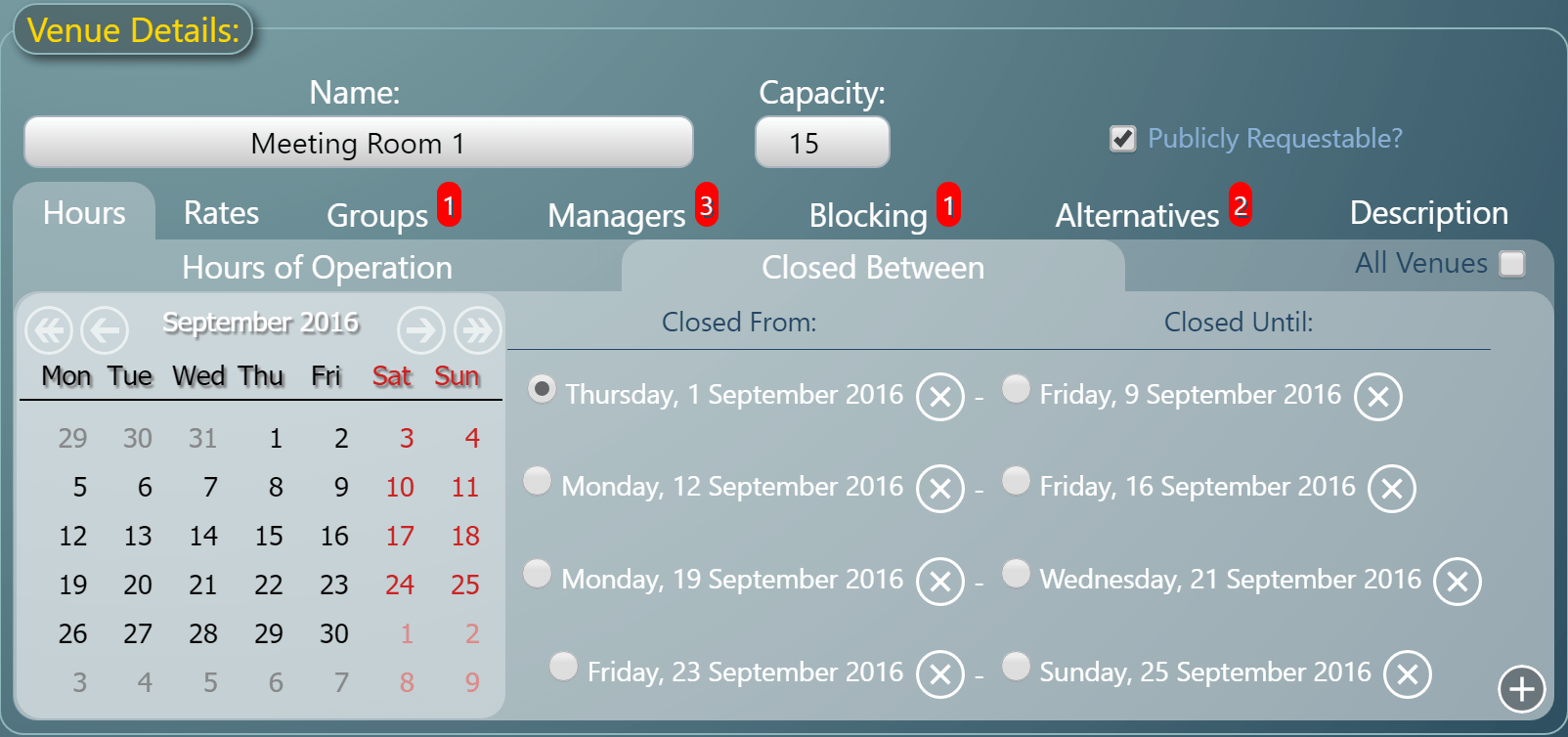The popular “Public Booking Request” features of MIDAS allow non-users (i.e. visitors to your website) to check the availability of your venues and submit booking “requests” online. These requests can be quickly approved by an administrative user with just a couple of clicks and converted to “confirmed” bookings, or they can be rejected just as easily.
To make a public booking request, a requestor would go to https://your_midas_url/request. If requests have been enabled they can then select a venue (or venues), date (or dates), times, and resources, and check availability accordingly. They can then enter their details, and any additional details relating to their request and submit their request online.
For v4.15, we’re giving administrators more flexibility when it comes to the initial venue selection step of the Public Booking Request process.
Previously, a requestor would need to manually select the venue (or venues) they wish to request. However, in v4.15 an administrator can instead replace the traditional individual/manual venue selection for Public Booking Requests with automatic venue selection instead.
If the automatic venue selection option is enabled, a requestor simply selects a venue group. MIDAS will in turn automatically select a venue from within the selected group accordingly.

This is ideal if you allow public requesting of similar rooms. For example, if you have 10 identically sized/equipped meeting rooms, a requestor doesn’t necessarily care which one of these rooms their meeting takes place in. These new options would allow them to simply select that they wish to request a “Meeting Room”, and MIDAS will allocate a meeting room accordingly.
How MIDAS allocates venues when the automatic venue selection option is enabled may be configured by an administrative user….

Auto Venue Selection options include:
- Random – MIDAS will attempt to select an available venue at random from the all publicly requestable venues within the selected venue group.
- Venue Order – MIDAS will attempt to select the next available venue from the all publicly requestable venues within the selected venue group, based on the order your venues are configured to appear within MIDAS.
- Least Used (Number of Bookings) – MIDAS will attempt to select an available publicly requestable venue from the selected venue group with the least number of existing bookings in it.
- Least Used (Venue Utilization) – MIDAS will attempt to select an available publicly requestable venue from the selected venue group with the most free time in it (i.e. the least utilized venue)
These exciting new option for Public Booking Requests allow far grater flexibility, make it easier for people to make booking requests, and ensure more balanced usage of your venues!
 Clicking the “Reject All” button typically allows you to optionally enter a brief reason why you’re rejecting the requests
Clicking the “Reject All” button typically allows you to optionally enter a brief reason why you’re rejecting the requests